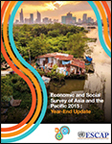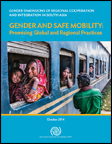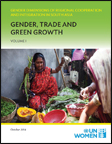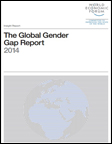The WEB of Transport Corridors in South AsiaThis book looks at how the economic benefits of investments in transport corridors could be amplified and how negative impacts could be minimized in South Asia. The book introduces an appraisal methodology that looks at the web of interconnected elements around corridors and assesses proposed corridors according to their potential to bring wider economic benefits (WEB). It uses case studies of past and recent corridor initiatives, and presents a simulation of the impact of the proposed Kolkata-Dhaka corridor. Author: Asian Development Bank, JICA, UKAID, World Bank Year: 2018 Download Tags: ADB, Economic Corridor Development, Gender, Regional Integration, Roads, Trade, Transport, WB, ADB RCI Asian Development Bank and Nepal: Fact SheetThe ADB Fact Sheet provides social and economic indicators on Nepal, as well as information on ADB operations in the country and contact details. Nepal is working toward graduation to middle-income country status and achieving the Sustainable Development Goals by 2030. ADB assistance aims to improve equitable access to education while pursuing a strategy that aims to address bottlenecks in infrastructure development in energy, transport, and urban facilities. ADB operations will also focus on agriculture, gender equality, good governance, environmental sustainability, regional cooperation, and private sector development. Author: Asian Development Bank Year: 2017 Download Tags: ADB, Nepal, Sustainable Development Goals, Infrastructure, Energy, Transport, Agriculture, Regional Cooperation, Gender  Economic and Social Survey of Asia and the Pacific 2015: Year-end UpdateThis year-end update revises economic growth in developing economies in Asia and the Pacific to 4.5% in 2015, from earlier projections of 4.9%, and updates the economic growth forecast for 2016 to 5%, from 5.2%. In most developing economies, including South and South West Asia, private consumption will lead to a slight pick-up in economic growth in 2016, amid gradual fiscal tightening and weak exports. With less robust growth compared to the years before and immediately after the global financial and economic crisis that started in 2008, the report highlights a need to tap into domestic and regional sources of demand—alternatives to dependence on external demand—including boosting investment in infrastructure, small and medium-sized enterprises, and the agricultural sector. Promotion of labor participation among the youth and the female population in South and South West Asia is also encouraged, since evidence has shown that improving their job opportunities matters for economic growth. Author: UNESCAP Year: 2016 Download Tags: Economic Growth, Gender, Infrastructure, UNESCAP Policy Brief: A Safe Public Transportation Environment for Women and GirlsEnsuring safe public transport for women enhances inclusive growth by encouraging their participation in the public sphere, including the workforce. A range of interventions dealing with the issue of sexual harassment—which negatively impacts women's movement in public spaces, affecting their productivity—in public transportation have been adopted by governments and civil society around the world, including media campaigns, targeted mobile applications, and women-only public vehicles. This report draws on rapid assessments of sexual harassment in public transportation conducted in three countries in Asia, with recommended actions to prevent and address sexual harassment in public transportation and its related spaces, such as train platforms and bus stops. Author: Asian Development Bank Year: 2015 Download Tags: Gender, Inclusive Growth, Transport  Gender Dimensions of Regional Cooperation in South Asia: Gender and Safe Mobility – Promising Global and Regional PracticesThis technical report analyzes global practices related to gender equality and safe migration, and their applicability to the context of South Asia. "Hard" aspects, such as physical infrastructure and equipment including border infrastructure, passenger holding facilities and surveillance cameras, and "soft" aspects, such as regional, bilateral and/or country-specific policies, programs, mechanisms and institutional linkages of safe mobility, are presented. The report also presents national policies and procedures that promote safe mobility. Given the lessons drawn from the reviewed policies and practices, it highlights the need for stronger evidence-based approaches in understanding the complex experience of women migrant workers, and identifies the need for more regular peer exchange through periodic regional dialogues of key stakeholder groups. Author: International Organization for Migration Year: 2014 Download Tags: Gender, Migration, South Asia, Bangladesh, Bhutan, India, Nepal, Transport, Trade  Gender Dimensions of Regional Cooperation in South Asia: Gender, Trade and Green Growth (Volumes I and II)This technical report presents an analysis of the interconnection between gender equality, regional trade and sustainable development in selected areas of four South Asian countries. In general, the report found women's contributions to total exports of all countries to be low, and in green exports to be lower. It identifies constraints and challenges, such as limited training in entrepreneurship, gender stereotypes related to green trade, existing gaps in policy framework, and weak access to technology, hindering women's participation in three green trade industries - agriculture and agro-processing, renewable energy, and ecotourism. The report looks at possible entry points for women, and recommended a list of actions to tap these identified entry points, including the need for greater exchange and cross-fertilization of experience among associations of women entrepreneurs and women’s chambers of commerce in South Asia. Author: Shreyasi Jha, Ritu Dewan, Amee Misra, Saloni Singh, Navanita Sinha, Maheen Sultan and Sonam Tobgay Year: 2014 Download Tags: Gender, Trade, Sustainability, South Asia, Bangladesh, Bhutan, India, Nepal  The Global Gender Gap Report 2014The Global Gender Gap Index benchmarks national gender gaps on economic, political, education and health criteria. According to this 2014 edition, the Asia and Pacific region has closed 66% of its overall gender gap. However, it continues to rank second from last on the Economic Participation and Opportunity subindex. According to the report, Bangladesh has achieved its highest overall score since 2006, with significant improvements on the Economic Participation and Opportunity, and the Educational Attainment and Health and Survival subindexes. However, it still ranks 127th on the Economic Participation and Opportunity subindex, a score still below the subindex average. Nepal ranks second highest in percentage change for improvements in the Educational Attainment, Health and Survival, and Political Empowerment subindexes, but ranks 122nd on the Economic Participation and Opportunity subindex. India is also below average on the Economic Participation and Opportunity subindex. Author: World Economic Forum Year: 2014 Download Tags: Gender, Economic Participation, Trade SAARC Biz: The Inevitability of South Asia SAARC Biz is a monthly publication of the SAARC Chamber of Commerce & Industry and features a report on the 'Inevitability of South Asia'. While the term 'South Asia' is commonly accepted, it argues that regionalism is far from being implemented on the ground. For instance, SAARC was accepted as a concept of cross-border regionalism but was hobbled due to budget constraints and restrictive mandates. Connectivity across national frontiers is needed to jump-start regionalism and improve lives in the most deprived parts of the Subcontinent. Author: SAARC Chamber of Commerce and Industry Year: 2014 Download Tags: South Asia, Regional Cooperation, SAARC, Industrialization, Regional Integration, Poverty Reduction, Gender, Least Developed Countries, Connectivity, Agriculture, Bangladesh, Youth, India, Environment, Investment, Tourism, Renewables Evaluating Aid for Trade on the Ground: Lessons from BangladeshThis paper assesses the effectiveness and impact of aid for trade (AfT) in Bangladesh in a series of eight country studies by the International Center for Trade and Sustainable Development. The study argues that the results for AfT are mixed for Bangladesh since it has addressed supply side constraints and contributed to enhancing export competitiveness. However, lack of efficient administrative mechanisms, limited human capacity, and political instability that lead to low absorption capacity limits the overall effectiveness and impact of AfT in Bangladesh. Author: Fahmida Khatun, Samina Hossain and Nepoleon Dewan Year: 2013 Download Tags: Bangladesh, Trade, Aid for Trade, Sustainability, Export, Development, Asia, Gender, LDC, Least Developed Countries |



